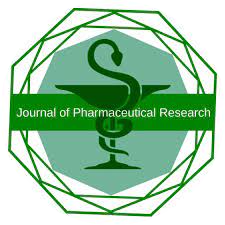


Journal of Pharmaceutical Research
Year: 2025, Volume: 24, Issue: 3, Pages: 171–174
Original Article
Abhishek Naskar1, Pradip Kumar Ghoshal2, Subhrangsu Chatterjee3,∗, Rajarshi Mondal4, Tanmoy Kanti Goswami5, Asish Biswas6
1Senior Resident, Department of Cardiology, IP.G.M.E & R, Kolkata, West Bengal, India
2Associate Professor, Department of Cardiology, IP.G.M.E & R, Kolkata, West Bengal, India
3Assistant Professor, Department of Pharmacology, IP.G.M.E & R, Kolkata, West Bengal, India
4Assistant Professor, Department of Cardiology, IP.G.M.E & R, Kolkata, West Bengal, India
5Associate Professor, Department of Pharmacology, IP.G.M.E & R, Kolkata, West Bengal, India
6Professor, Department of Pharmacology, MJN Medical College, Cooch Behar, West Bengal, India
∗Corresponding author
Email: subhrangsu27@gmail.com
Sodium-glucose co-transporter 2 (SGLT2i) inhibitors were initially introduced as oral hypoglycaemic agents. These medications have demonstrated effectiveness in reducing hospitalisations for heart failure and offer mortality benefits for individuals with type 2 diabetes and cardiovascular disease. Left atrial (LA) dysfunction is now considered to play a major role in the pathogenesis of Heart Failure with preserved Ejection Fraction (HFpEF). SGLT2 inhibitors are proved to improve cardiac remodelling irrespective of glycemic profile and reduce Left Atrial Volume Index (LAVI) with treatment. The aim of the study is to determine the effect of SGLT2i on LA strain in patients with HFpEF. This is a descriptive follow-up study, conducted at Cardiology IPD & OPD, IPGMER and SSKM Hospital, Kolkata, which aims to evaluate the effects of SGLT2 inhibitors on patients with heart failure with preserved ejection fraction (HFpEF). It involves 50 patients presenting with HF symptoms and an H2FPEF score ≥6. The study includes a baseline assessment with detailed history, NT-proBNP levels, and echocardiography (including LV global longitudinal strain, LA strain, RV function, and diastolic parameters). After 6 months of treatment with SGLT2 inhibitors, patients will undergo a follow-up evaluation using biomarkers and electrocardiographic parameters like LV volumes, LV diastolic function, LV Global Longitudinal Strain, LA Strain. Statistical analysis was performed using SPSS, with significance set at a p-value ≤ 0.05. In our study, the mean age of the population is 61.64 ± 8.69years. 34% of the population had atrial fibrillation, 72 % were obese, 10% belonged to NYHA Grade III. 38% of the patients were given Empagliflozin and 62% were given Dapagliflozin. In our study, we found that treatment with SGLT2i resulted in significant improvement in LAVI from 48±2.4 ml/m2 to 41.8±2.9 ml/m2, peak LA strain and E/e’. Peak LA strain showed a negative correlation with NT Pro BNP level.
Keywords: SGLT2 inhibitors (SGLT2i), Heart Failure, LA dysfunction, LA Strain, NT ProBNP, Cardiac remodelling, Echocardiography
© 2025 Published by Krupanidhi College of Pharmacy. This is an open-access article under the CC BY-NC-ND license (https://creativecommons.org/licenses/by-nc-nd/4.0/)
Subscribe now for latest articles and news.